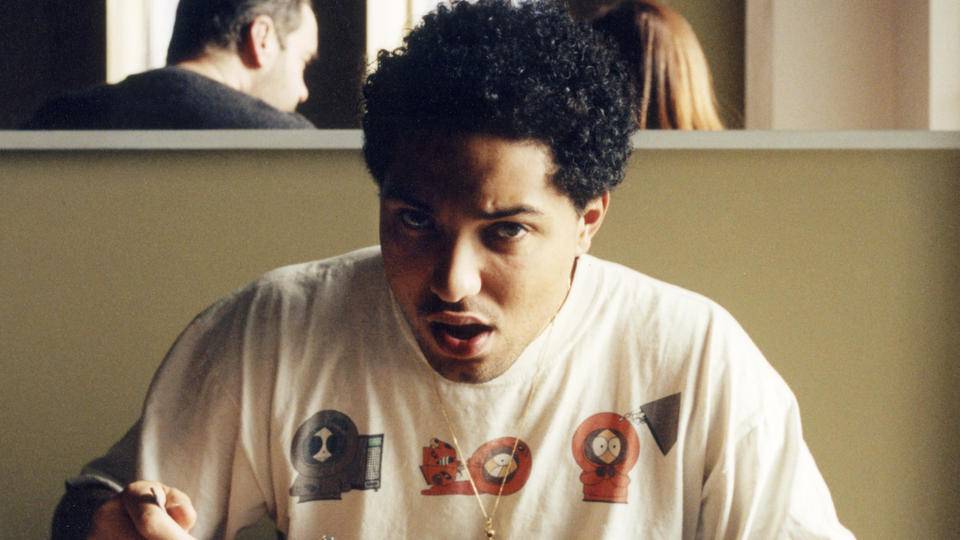10 WTF Things You Never Knew About HIV

We’ve all heard about HIV, right? So you might have some facts in the bag…
HIV (human immunodeficiency virus) attacks your immune system and weakens it over time. You can get it from contact with certain bodily fluids like genital fluids and blood, so ways of contracting HIV include unprotected sex, sharing needles, or contact with open wounds. Babies can also get it during pregnancy, birth or via breast-feeding from HIV-positive mums.
'Here's what Courtney Act has to say about safe sex...'
'
'
AIDS (acquired immune deficiency syndrome) is a set of symptoms and illnesses you get when HIV is at its most advanced stage and your immune system can no longer fight infection. Nobody dies of HIV – they die of an AIDS-related illness.
And breathe. So those are the (quite science-y) basics, but there are a whole host of things about HIV that we bet you’ve never realised…
1. It was called GRID at first
In the early 1980s, HIV was being called GRID by researchers, an acronym that stood for ‘gay-related immunodeficiency disease’.
Men who have sex with men are one of the population groups more at risk of contracting HIV (because anal sex has a higher risk of infection due to a likelihood of broken skin), which was why HIV was being found in mostly gay men at the time. But obviously calling HIV ‘gay-related’ is a) pretty dangerous because people in heterosexual relationships must have assumed they were immune and b) anal sex doesn’t belong to any one type of sexuality. Obvs.
2. It’s one of the deadliest pandemics in HISTORY
Since the start of the epidemic in the early 1980s, around 35 MILLION people have died from AIDS-related illnesses. That makes it one of the deadliest pandemics ever recorded!
3. Overall rates are falling
We’ve come a LONG way since the beginning of the epidemic – there’ve been some amazing developments in research and treatments, and the overall rates of infection are falling around the world. In fact, HIV rates have fallen by 50% or more in 26 countries since 2001!
4. AIDS is now the second biggest killer of young people worldwide
Unfortunately though, it’s not all good news. As well as being the second biggest killer of young people around the world right now, AIDS is THE biggest killer of young people in sub-Saharan Africa. So we’ve still got a while to go…
5. You CAN’T get it from skin-to-skin contact or kissing
There are loads of misconceptions about contracting HIV, including that you can contract it from toilet seats and kissing, but HIV doesn’t transfer through saliva, or through ghost bum prints of past toilet-goers.
6. There used to be more stigma around it
There was such a huge stigma around HIV back in the day that people were afraid to even touch others who were infected (which shows how little they all knew about contracting it). Back then, when we had very little knowledge about HIV and didn’t have proper treatments, it really was seen as a certified death sentence, too, so people were even more petrified.
In many places around the world, though, this stigma lives on, and ending it is a HUGE part of the battle if we want to end HIV altogether.
7. There are pre-sex prevention treatments
At the moment there’s no cure for HIV, but there ARE treatments available these days that work to prolong the HIV part, lower your infectiousness, and prevent AIDS-related illnesses for a long time.
One of the amazing new prevention treatments in the HIV world is PrEP (pre-exposure prophylaxis), which you can take if you DON’T have HIV but are high at risk of getting it (e.g. you regularly sleep with an HIV-positive partner). It’s thought that protection is nearly completely guaranteed if people take it as they should, but obvs using a condom as well is a must.
8. There’s also a post-sex prevention pill
Like the morning after pill helps you to avoid pregnancy, PEP (post-exposure prophylaxis) is a pill that helps lower the risk of contracting HIV after sex IF your contraception method falls through and your partner is HIV-positive. Like the morning after pill, it’s an emergency-only method, and also gets less effective the more time you leave before taking it.
UNlike the morning after pill, PEP has to be taken more than once to be effective – in fact, it has to be taken every day for 28 days to work. It’s also completely free to get, but has to be prescribed by a doctor.
9. The longer you leave it, the worse it could be
With all the amazing new treatments, getting diagnosed with HIV means you can often keep the virus at such low activity that you can live a long healthy life, AND have a low risk of infecting any sexual partners.
However, HIV is often undetectable when you first get it (though most people have some sort of short-term illness soon after contracting it) which means if you don’t get tested, you won’t realise you have it for up to several years during the asymptomatic stage. But the longer you leave HIV without treatment, the more likely you are to develop illnesses like cancer and other AIDS-related illnesses.
10. HIV self-testing kits now exist
In many countries, self-testing kits are now available, so that you can find out your HIV status in the privacy of your own home!
But even if you can’t access an HIV self-testing kit, it’s SO important to get tested and know your HIV status. Knowing whether you’re HIV-positive or HIV-negative may seem scary, but realistically the scarier thing is leaving HIV to wreak havoc on your immune system. It’s just a status, and if you’re HIV-positive you could save your own life by finding out and seeking treatment earlier, rather than later.
We’ve come a long way battling against HIV around the world, but some countries and demographics are being seriously left behind in the progress. It’s now young people that are most at risk of contracting HIV, and young girls are particularly vulnerable. Young women (10-24 years old) are twice as likely to get infected HIV as young men the same age, and AIDS-related illnesses are the leading cause of death of women between the ages of 15-44!
This World AIDS Day, we’re preaching: go get tested! It only takes oneprick of a finger to know your status.And remember to helpraise awareness about HIVand join the movement, using the hashtag #WorldAIDSDay. Check out the MTV Staying Alive Foundation website too, to find out all about the work we dowith our amazing young grantees to help stamp out HIV.
'For more information about HIV and AIDS, click here. To find out how you can help to eradicate HIV, read the stories of our incredible MTV Staying Alive grantees, and donate to help them fight HIV in their communities.'





